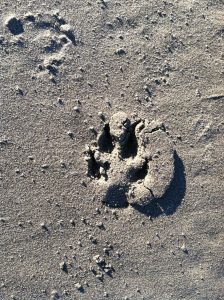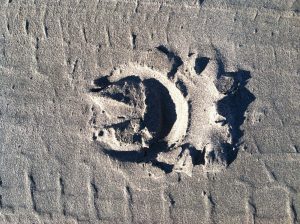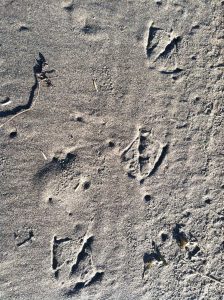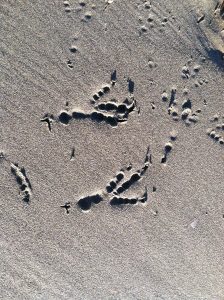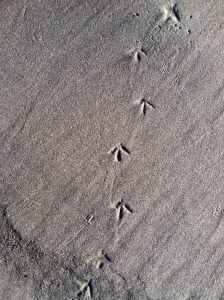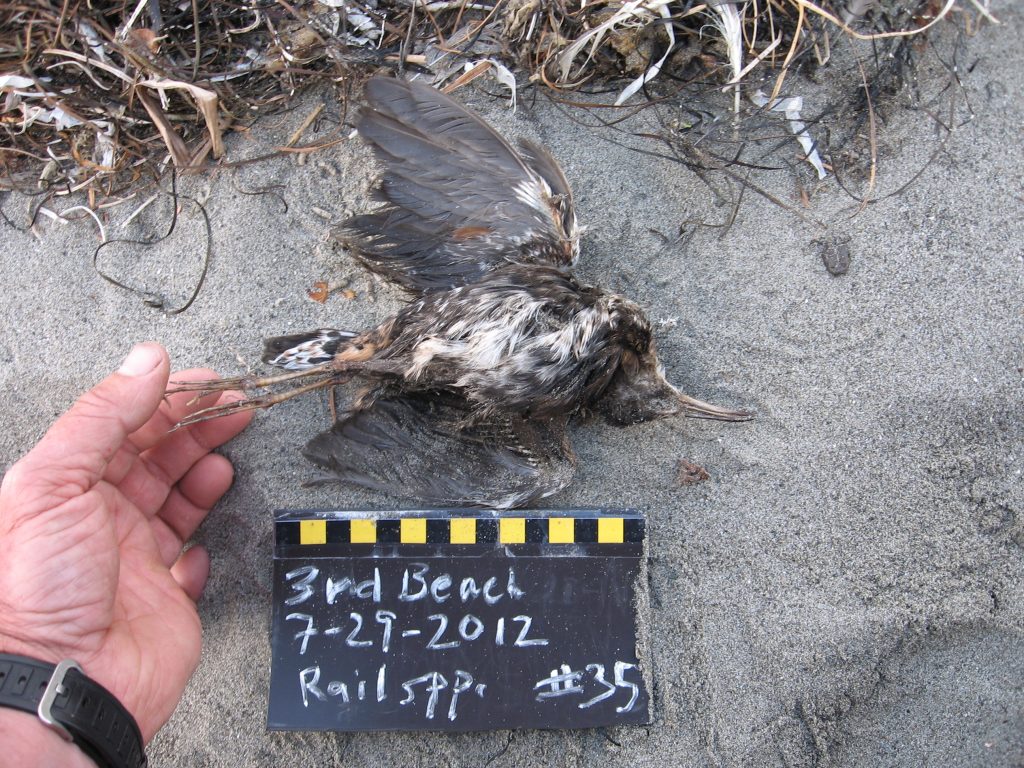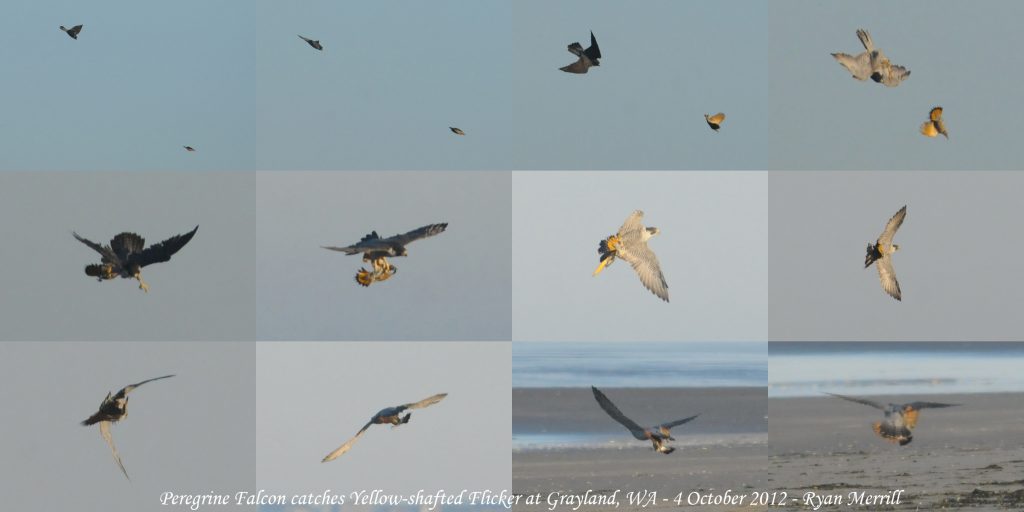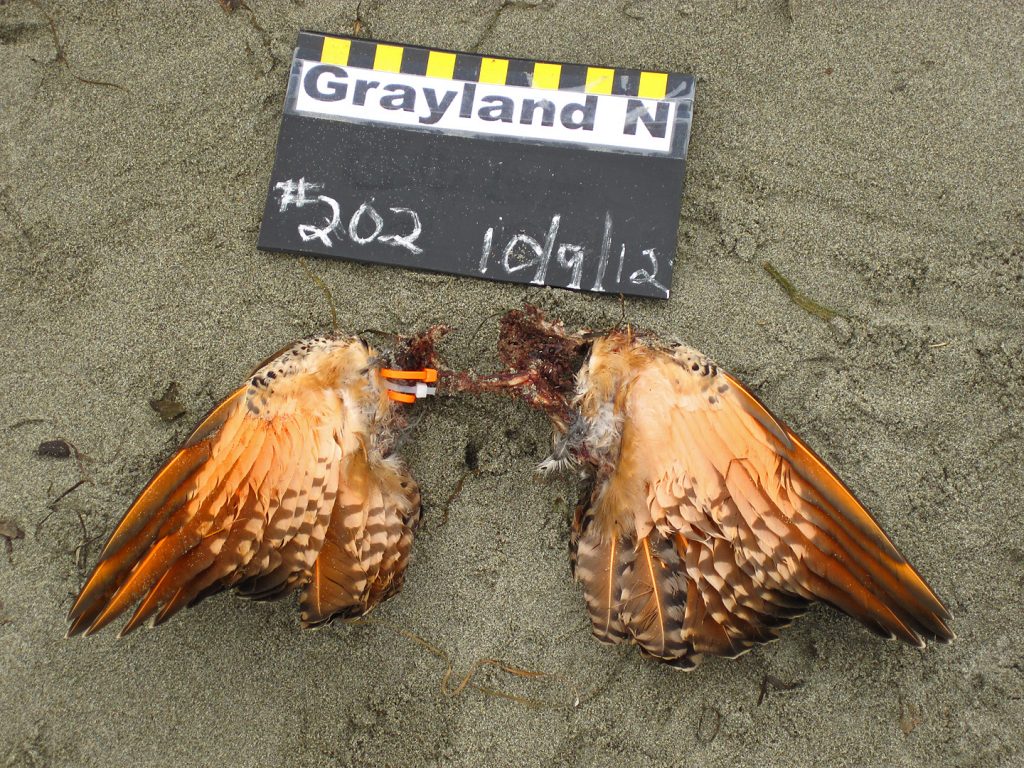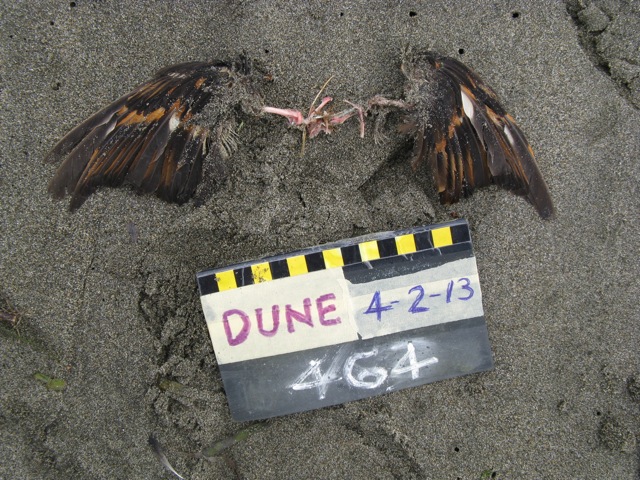On October 5th and 6th, the COASST interns and the University of Washington’s marine biology class drove to Ocean Shores, WA for a day of beached bird surveys. The interns and students learned the COASST survey protocol and got lots of practice identifying and tagging beached birds. The bird identification started off slow but the teams were quick to pick up the new skills as the day went on. By the end, they were identifying, recording data, and tagging birds with ease.

Marine biology students identifying and tagging a beached bird.
Eleven beaches were surveyed over the two days. Common Murres were by far the most abundant bird found. They were seen in breeding, non-breeding, and molting plumages which added an extra challenge for these new surveyors. Other commonly found birds included, Sooty Shearwaters and large immature gulls.
The teams also came across some rare finds. At South Chance, a beached yellow shafted Northern Flicker was spotted. It can be identified by the vibrant yellows found in the wings. Another team happened upon a skate egg casing, with small embryos inside. Not a bird, but a very cool thing to find!
Overall it was a great weekend. The weather was beautiful, with no rain, making it an enjoyable learning experience for all.

A yellow shafted Northern Flicker found on South Chance
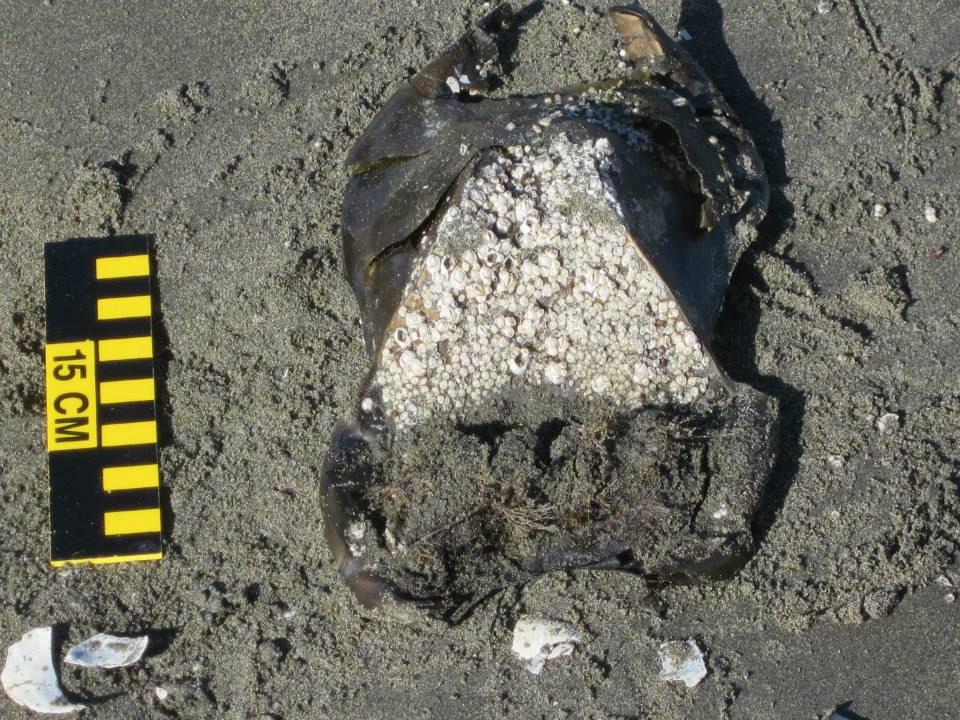
This skate egg casing was found during one of the surveys
